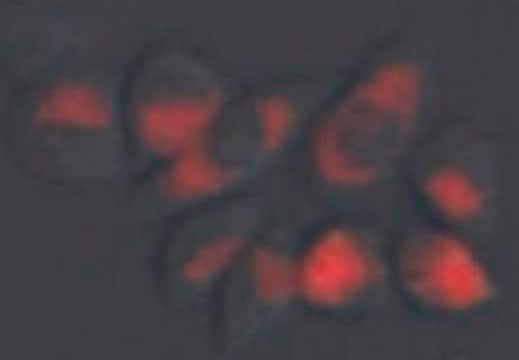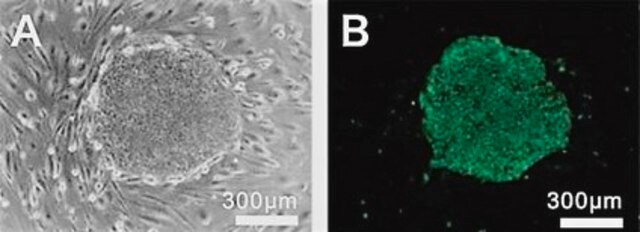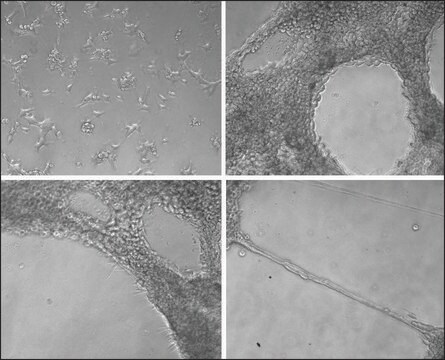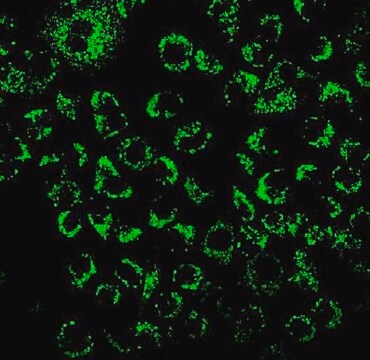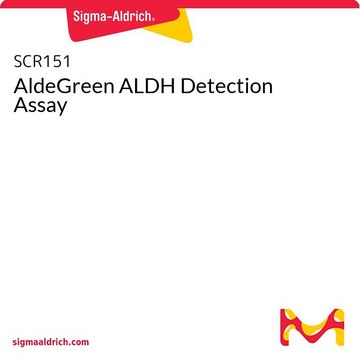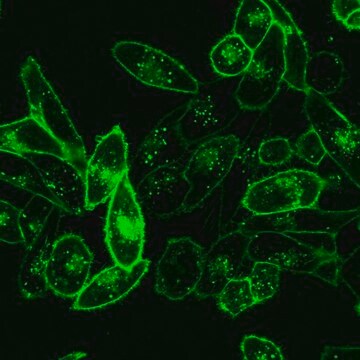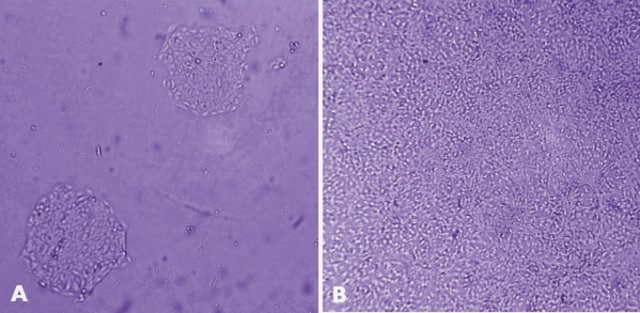SCR150
AldeRed® ALDH Detection Assay
Synonim(y):
ALDH Assay, Aldehyde Dehydrogenase Assay, Cancer Stem Cell Assay
About This Item
Polecane produkty
metody
cell culture | stem cell: suitable
flow cytometry: suitable
Poziom jakości
fluorescencja
λex 488 nm
λex 532 nm
λem 615 nm
metoda wykrywania
fluorometric
Warunki transportu
wet ice
Opis ogólny
Learn more about the AldeRed in Nature Communications! (Learn Now!)
High ALDH activity serves as a universal marker of stem cells, both normal and malignant. Cells can be identified and isolated based upon the enzymatic activity of ALDH, a detoxifying enzyme responsible for oxidation of hazardous aldehyde byproducts. The marker ALDH has been used to isolate cancer stem cells from various human malignancies including bladder, breast, cervical, colon, head and neck, liver, lung, pancreas, prostate and ovary. The AldeRed assay employs a fluorescent and non-toxic ALDH substrate (AldeRed 588-A) that diffuses freely into intact and viable cells, but remains trapped inside the cells once converted by ALDH into the corresponding acid. The amount of fluorescence produced is proportional to the ALDH activity in the cells and is measured by flow cytometry, allowing fluorescence-activated cell sorting (FACS). This kit supplies the ALDH inhibitor diethylaminobenzaldehyde (DEAB), which is used in negative control testing necessary for background fluorescence assessement.
Zastosowanie
• All live intact cells (even with low ALDH expression) become fluorescent upon exposure to activated AldeRed 588-A. The generation of a DEAB-treated control is necessary for each cell sample to establish baseline fluorescence.
• Handle all reagents using aseptic techniques.
Stem Cell Research
Apoptosis & Cancer
Komponenty
2. DEAB Reagent: (Part No. CS216595). One (1) vial containing 1 mL of DEAB (Diethylaminobenzaldehyde) reagent.
3. Hydrochloric Acid (2N): (Part No. CS216594). One (1) vial containing 1.5 mL of 2 Normal hydrochloric acid.
4. Dimethylsulphoxide: (Part No. CS216593). One (1) vial containing 1.5 mL of Dimethylsulphoxide (DMSO).
5. AldeRed Assay Buffer: (Part No. CS216592). Four (4) bottles containing 25 mL of AldeRed Assay Buffer each.
6. Verapamil: (Part No. CS220012). Four (4) vials containing 615 µg Verapamil powder each.
Jakość
• AldeRed® Reagent is 95% pure (PMR)
Przechowywanie i stabilność
• Reconstituted and activated AldeRed Reagent may be stored in aliquots at -20°C protected from light for up to 1 year. Repeated freezing and thawing is not recommended.
• AldeRed Assay Buffer supplemented with Verapamil may be stored at 2-8°C in aliquots for up to 3 months.
Informacje prawne
Oświadczenie o zrzeczeniu się odpowiedzialności
Hasło ostrzegawcze
Danger
Zwroty wskazujące rodzaj zagrożenia
Zwroty wskazujące środki ostrożności
Klasyfikacja zagrożeń
Acute Tox. 3 Oral - Aquatic Chronic 2 - Eye Irrit. 2 - Flam. Liq. 2 - Met. Corr. 1
Kod klasy składowania
3 - Flammable liquids
Temperatura zapłonu (°F)
55.4 °F
Temperatura zapłonu (°C)
13 °C
Certyfikaty analizy (CoA)
Poszukaj Certyfikaty analizy (CoA), wpisując numer partii/serii produktów. Numery serii i partii można znaleźć na etykiecie produktu po słowach „seria” lub „partia”.
Masz już ten produkt?
Dokumenty związane z niedawno zakupionymi produktami zostały zamieszczone w Bibliotece dokumentów.
Produkty
AldeRed™ 588-A wykrywa aktywność ALDH w nowotworowych komórkach macierzystych, pomagając w badaniach nad rakiem.
AldeRed™ 588-A is a red fluorescent live cell probe that detects ALDH activity used to identify cancer stem cells and progenitor cells in culture. Cancer stem cells (CSCs) are subpopulations of cancer cells that can self-renew, generate diverse cells in the tumor mass, and sustain tumorigenesis. Some researchers believe that cancer arises from cancer stem cells that originate as a result of mutational hits on normal stem cells.
Zapoznaj się z rodzajami komórek macierzystych, w tym multipotencjalnymi komórkami macierzystymi, pluripotencjalnymi komórkami macierzystymi i iPSC oraz ich zastosowaniami w podstawowych badaniach nad komórkami macierzystymi, terapii komórkami macierzystymi i modelowaniu chorób.
Cancer stem cell media, spheroid plates and cancer stem cell markers to culture and characterize CSC populations.
Protokoły
Step-by-step tumorpshere formation protocol that can used to generate 3D cancer stem cell spheroids.
Nasz zespół naukowców ma doświadczenie we wszystkich obszarach badań, w tym w naukach przyrodniczych, materiałoznawstwie, syntezie chemicznej, chromatografii, analityce i wielu innych dziedzinach.
Skontaktuj się z zespołem ds. pomocy technicznej